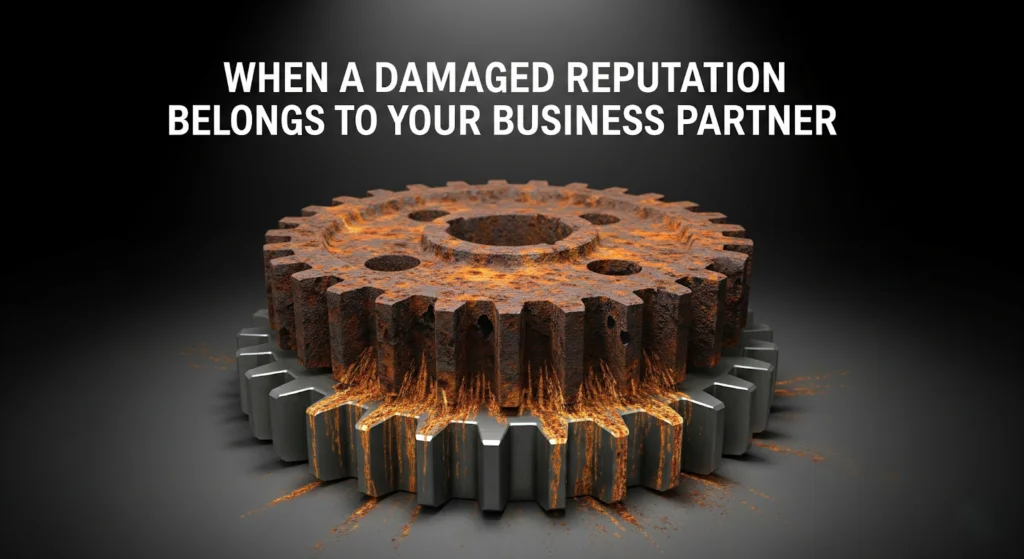In business, partnerships can be powerful. Shared resources, complementary skills, and joint credibility often create growth opportunities that would be difficult to achieve alone. But what happens when that partnership becomes a liability—when your partner’s reputation falters? Suddenly, the damage doesn’t stop with them. It spreads to you, your brand, and even your bottom line.
Understanding Reputation Damage
At its core, reputation damage is a breakdown in trust. It happens when negative events—whether scandals, customer complaints, legal issues, or ethical missteps—shift public perception.
The tricky part in a partnership is that the damage doesn’t stay contained. A partner’s missteps can erode your credibility by association. Customers, investors, and the public often don’t separate one entity from another—they see the partnership as a whole.
How It Impacts Your Business
The ripple effect of a partner’s damaged reputation shows up in two main ways:
Financial Consequences
When trust slips, revenue often follows. Customers hesitate to buy, investors may withdraw, and opportunities can dry up. Even if you weren’t directly involved in the issue, you may face a decline in sales or reduced market confidence simply because of the association.
Customer Trust and Loyalty
Trust is fragile. A survey-driven reality is that once consumers lose confidence, many never return. If your partner is making headlines for the wrong reasons, your customers may wonder: “Can I trust this company too?” That doubt alone can drive them elsewhere.
Assessing the Situation
Before reacting, take a clear-eyed look at the situation.
- Identify the source: What exactly caused the reputational hit—customer complaints, ethical missteps, legal issues?
- Evaluate severity: Is this a temporary issue or a long-term problem? Is it isolated, or part of a pattern?
This assessment helps you decide whether the partnership can be repaired—or if distancing your brand is the only viable path.
Communication Is Key
Once you understand the situation, communication becomes critical. Silence often reads as complicity.
Internal Communication
Your employees should hear the truth directly from you, not through rumors or headlines. Be clear about the facts, how it affects the business, and what steps are being taken. This builds stability inside your company and keeps morale steady.
External Communication
Stakeholders, customers, and partners need transparency. Be honest without oversharing. Acknowledge the issue, clarify your company’s values, and explain what actions you are taking to protect customers and maintain trust.
Mitigation Strategies
Supporting Your Partner’s Repair Efforts
If the situation is fixable, collaborate with your partner on a strategy to rebuild trust. This might include public apologies, stronger compliance policies, or visible commitments to accountability.
Protecting Your Own Brand
At the same time, you must safeguard your business. This means strengthening your own messaging, monitoring public sentiment, and emphasizing what sets your company apart. Many organizations turn to reputation management firms like NetReputation for this kind of specialized support—helping to suppress negative associations and highlight positive narratives.
Legal and Contractual Safeguards
Reputation issues also have legal dimensions. Review contracts with your partner to understand liability, obligations, and exit options. If their missteps expose you to risk, knowing your legal footing is essential. In some cases, you may need to renegotiate terms—or even dissolve the partnership—to protect your business.
Final Thoughts
A business partnership can magnify your success—but it can also magnify risk. When a partner’s reputation falters, it’s not just their problem; it becomes yours. How you assess the situation, communicate, and act will decide whether your business weathers the storm or gets pulled under with it.
Handled well, these moments can even become turning points—where a business reaffirms its values, earns customer respect, and proves its resilience.
You May Also Like: How to Mix Fire Cement with Other Materials?











